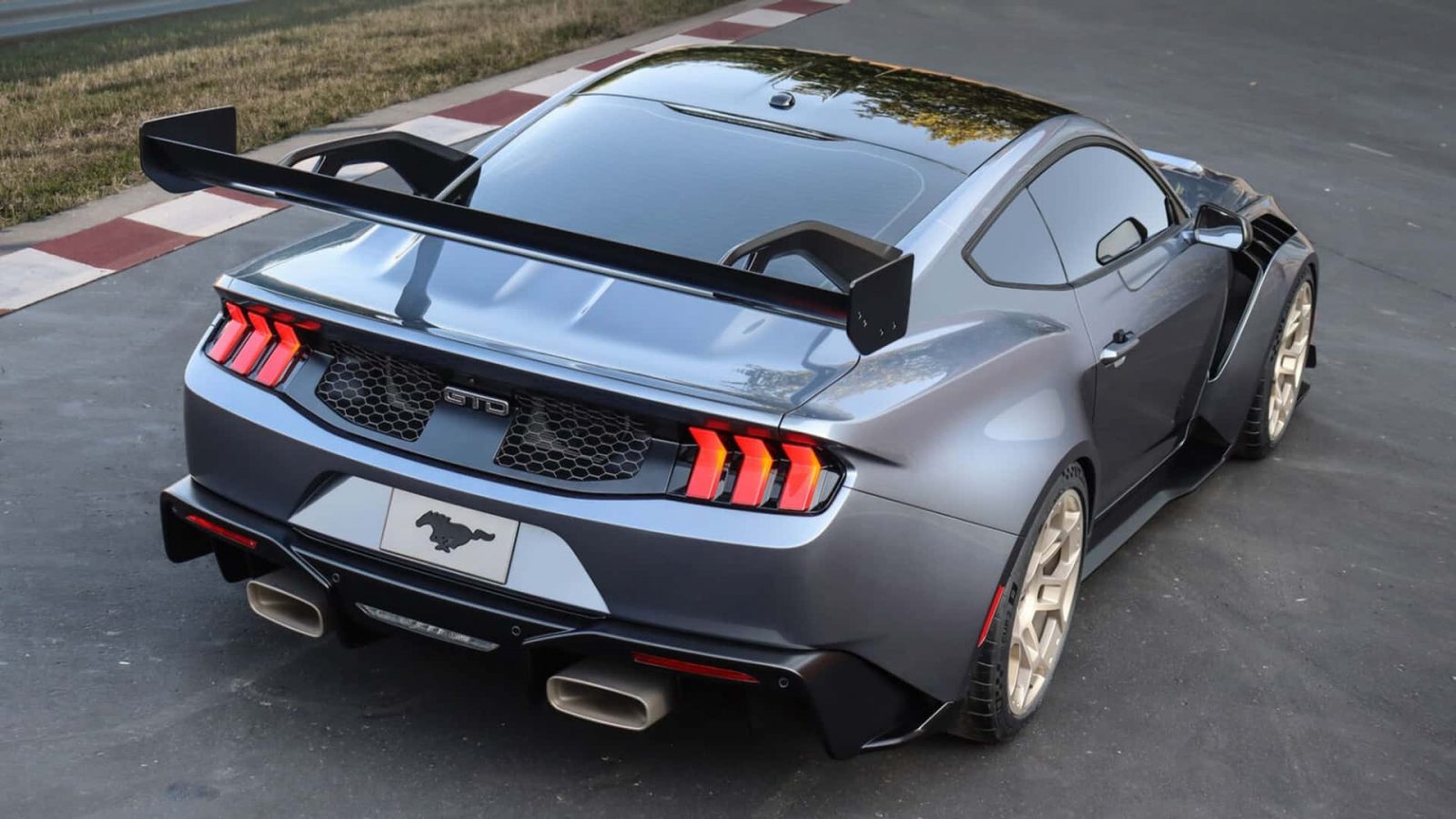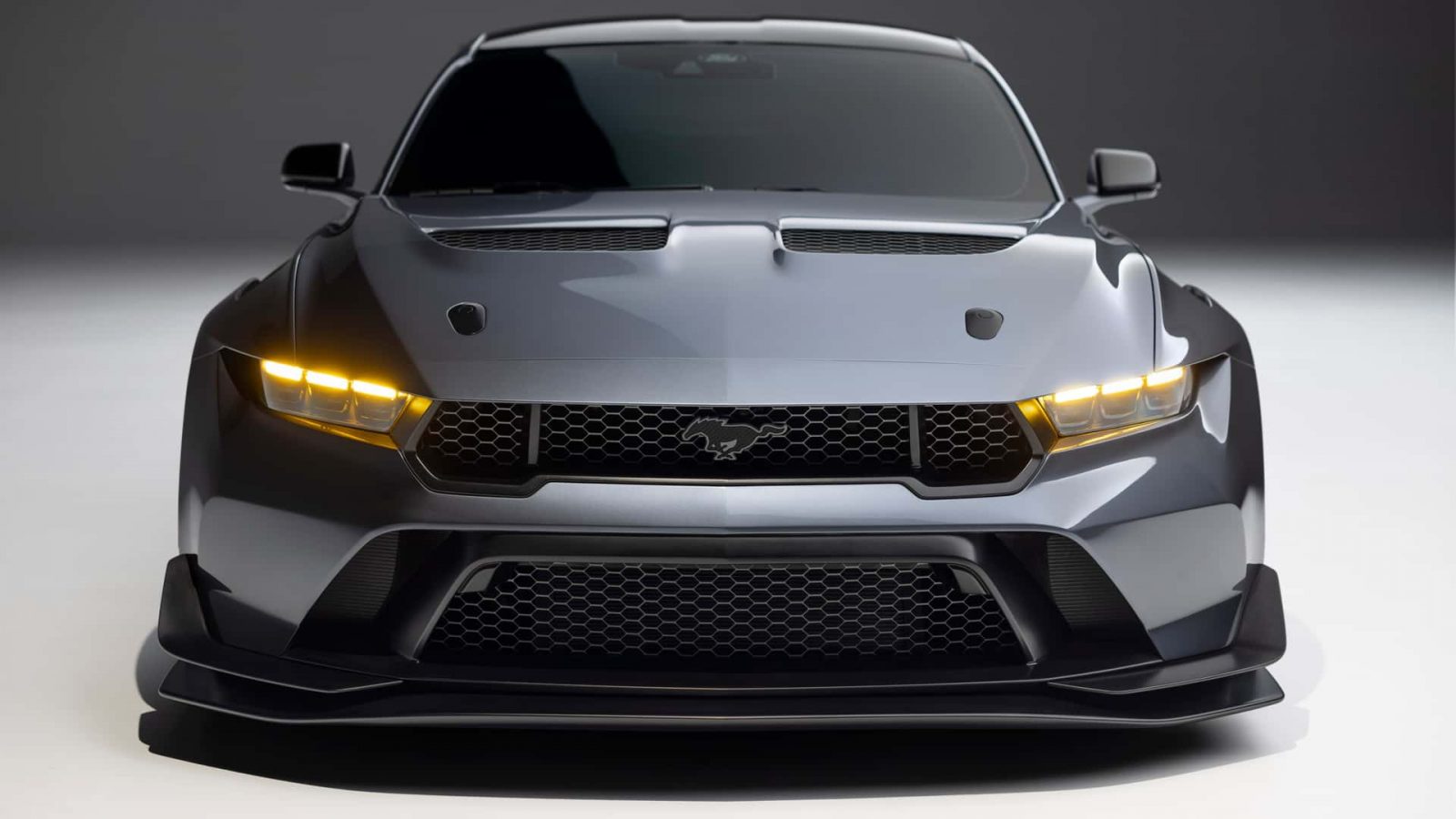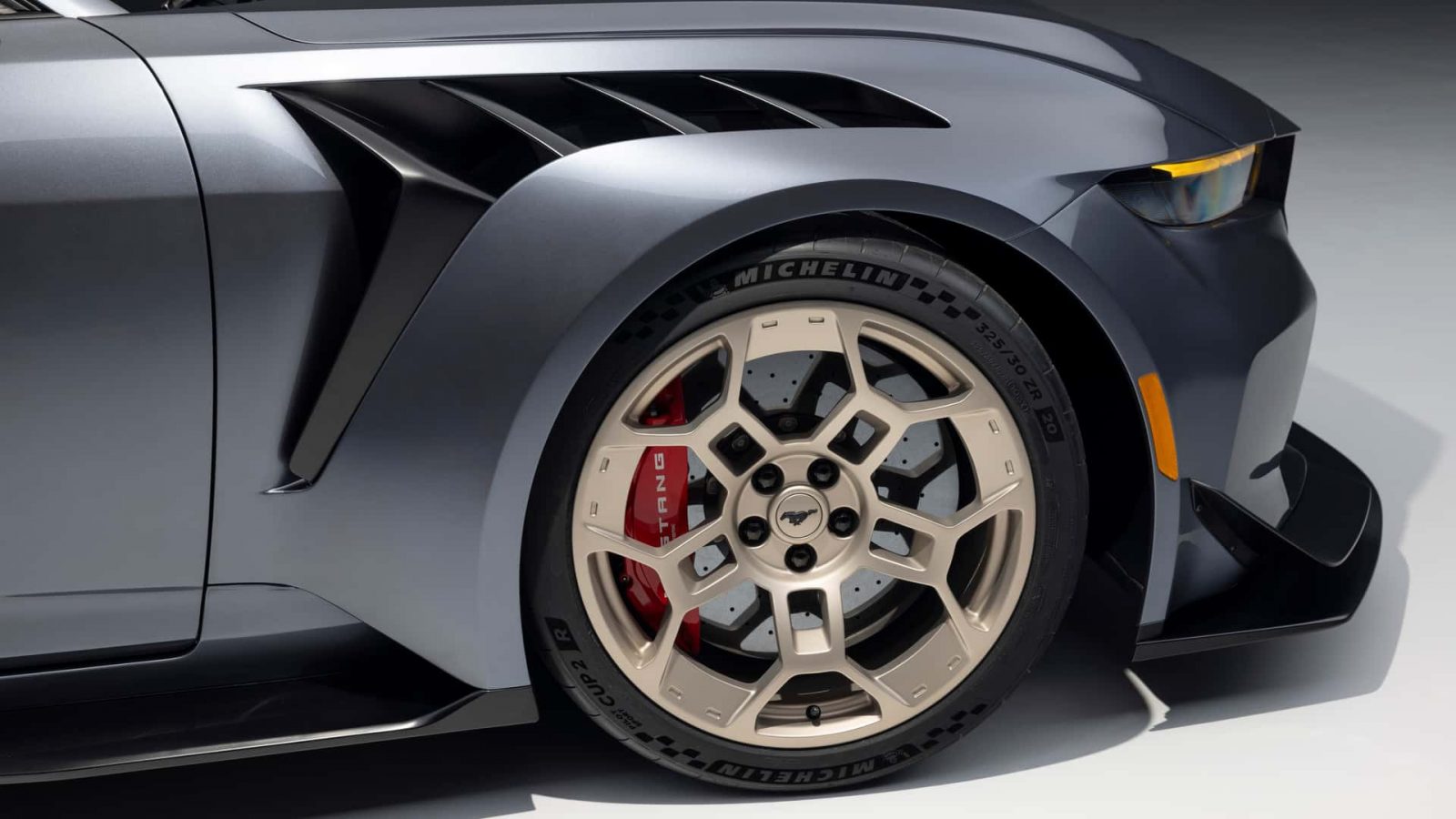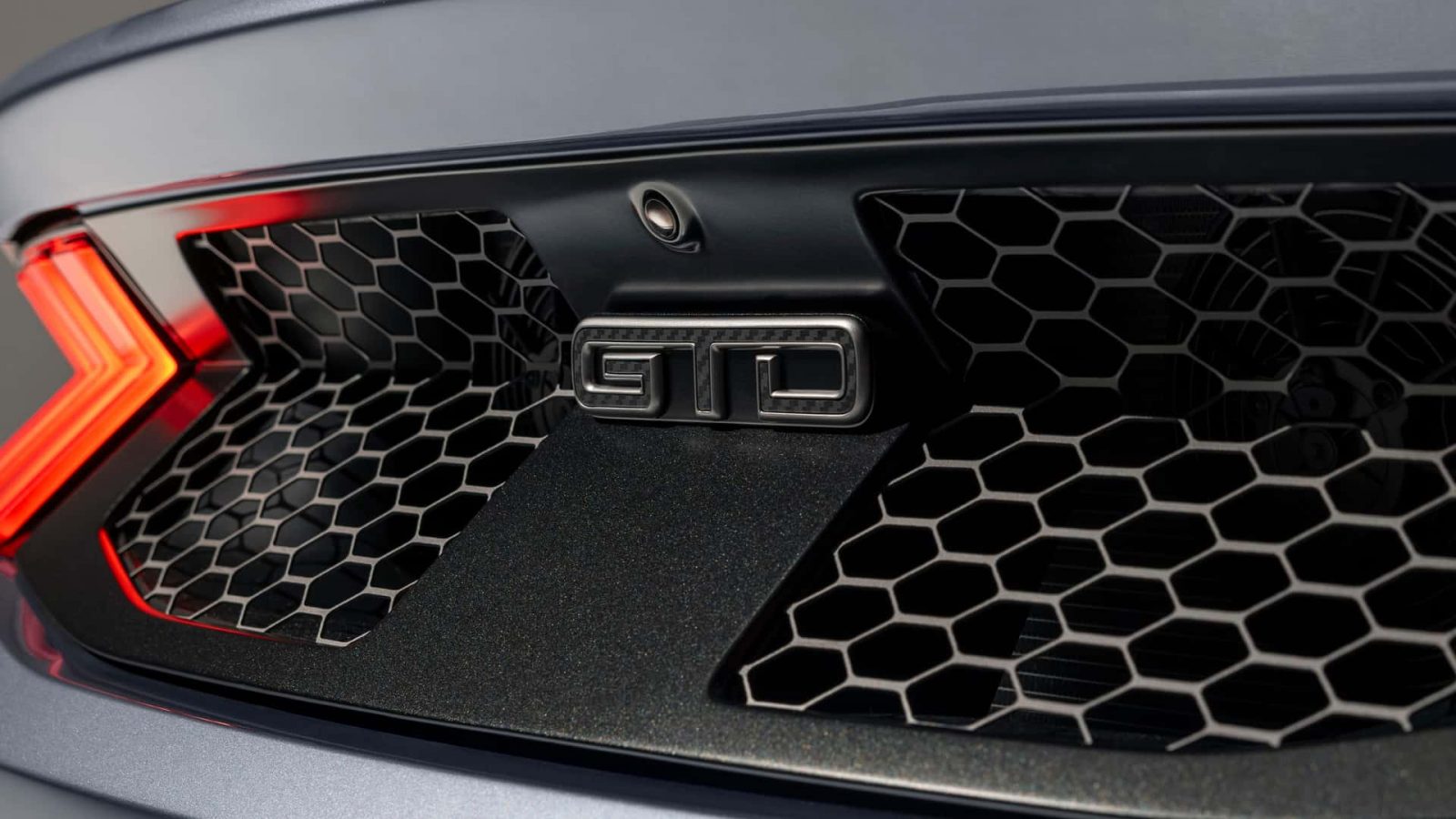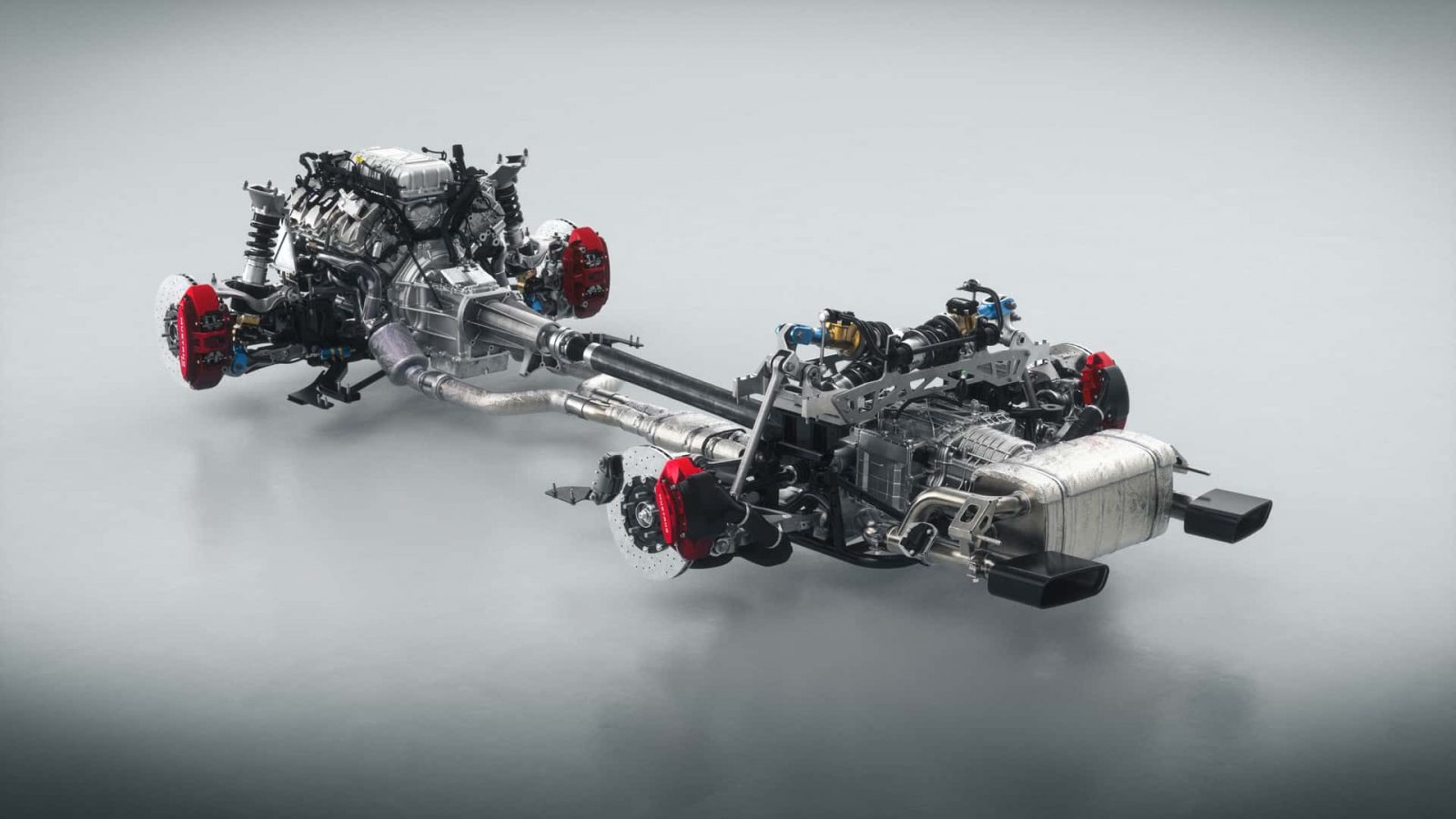Ford’s venerable Mustang has always been the defacto symbol of performance. It has been a champion of rear-wheel drive, V8 power, and a touch of Americana (the Mustang Mach-E EV being the exception to the rule. However, tightening fuel regulations are rapidly closing in on the Mustang. Before the company is forced to make the model formally comply, it has once again partnered with racing firm Multimatic to produce the all-new 2025 Ford Mustang GTD.
Mustang GTD Slays The Rumormill & The Track
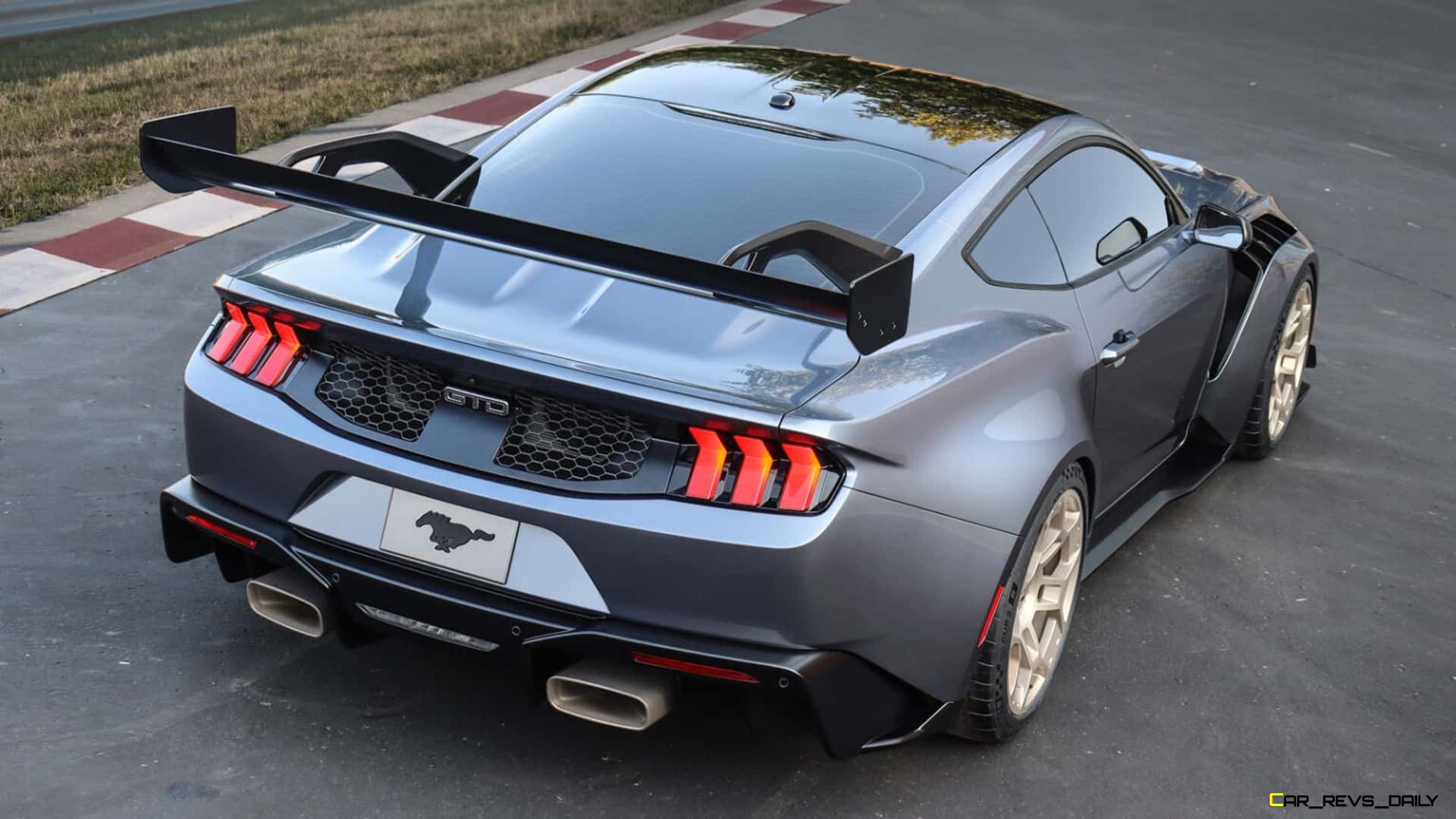
Before the model was unveiled, wild rumors (as well as an ill-timed leak) pointed to the model possibly being mid-engined, which would have made it the first muscle car ever to adopt a production mid-engine layout (second if you include the Chevrolet Corvette.) But that initial speculation was wrong, and the GTD will adopt the traditional front engine layout.
This layout meant that Ford designers were allowed to work with a familiar canvas, and as a result, this prior experience shows up in several key ways. For instance, to help save weight, the GTD extensively uses carbon fiber, using the material on items such as the hood, front splitter, side skirts, and other components. The front and rear fascias can also be made out of the material if a customer chooses, and a separate aerodynamic pack adds hydraulically controlled front flaps, an active rear spoiler, and a custom-built carbon fiber undertray. The GTD also steals a page from some of its supercar rivals and will allow buyers to choose any color they want (even custom shades that the paint team can match.)
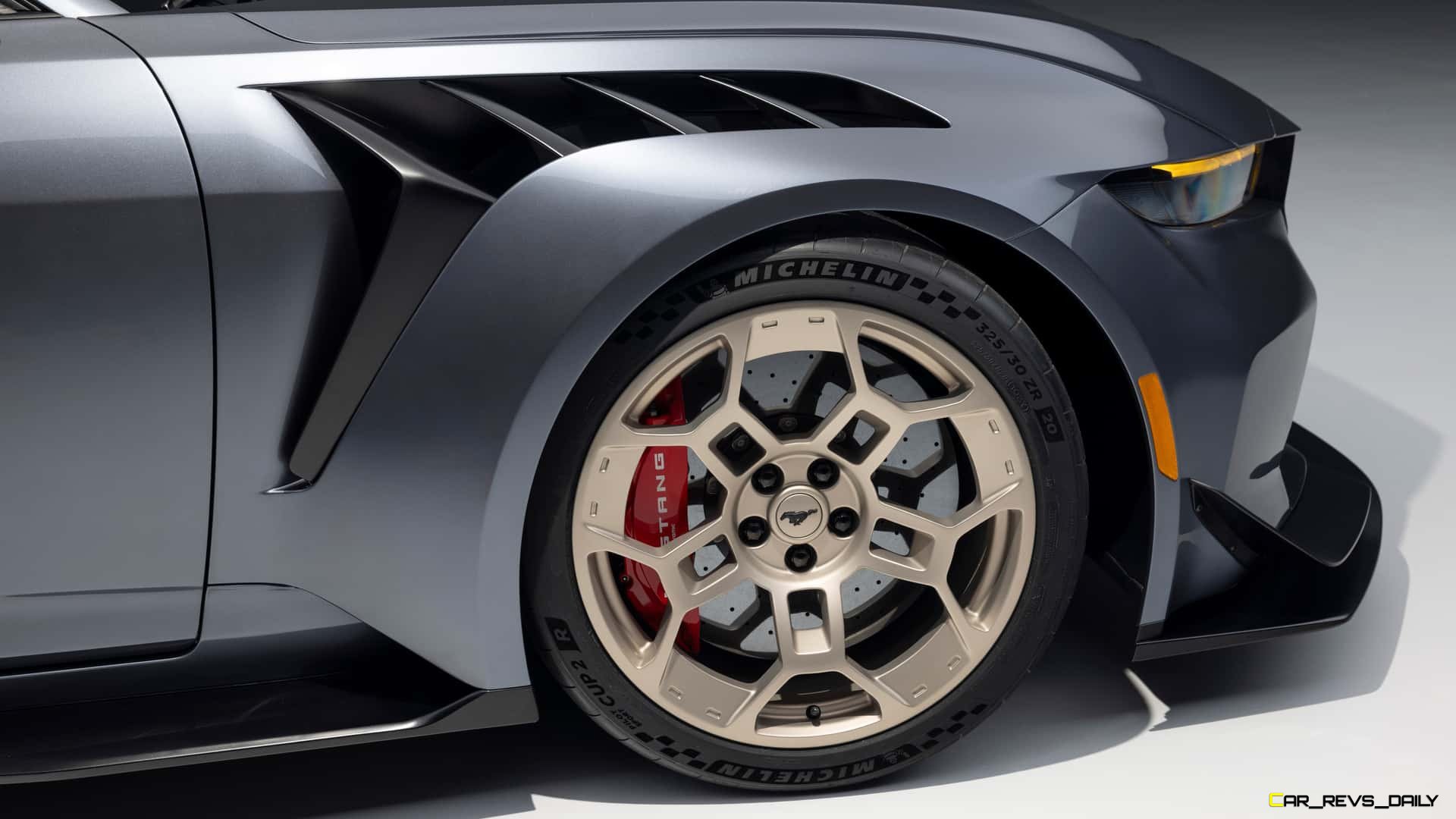
Ford didn’t reveal any interior pictures but confirmed that the cabin would have Miko suede inserts with leather and carbon fiber accents and a fully digital instrument cluster. The rear bench has been pitched (as was the case in the old Cobra R model) to help slash weight, while the 3d-printed paddle shifters, shift knob, and serial number plaque are all made out of titanium sourced from retired Lockheed F-22 Raptors. Recaro sport seats are also on hand to help keep occupants firmly in place during spirited driving. Meanwhile, the GTD will also be the first Mustang not to have traditional trunk storage, with this area being used for critical components, including the transaxle cooler and the push-rod suspension system. The back glass serves as an enormous vent and pumps cool air back there to help keep these items working at their best.
Performance Exceeds Shelby Barrier
Unlike other eras of Mustang, where a Shelby model often served as the ultimate expression of performance, the GTD will serve as the new performance benchmark. While the current generation Shelby GT500 makes over 750 horsepower, the supercharged 5.2-liter here makes over 800 horsepower, with Ford also equipping it with a titanium exhaust and active valve system. No all-wheel-drive system is offered here, with Ford continuing to stick to old-school rear-wheel drive. The engine also provides a 7,500 RPM redline and is hooked up to a rear-mounted eight-speed dual-clutch automatic.
An exotic Variable Traction Control System in the GTD allows owners to tailor the car to their tastes and has an impressive degree of configurability baked right into it. A semi-active suspension is also equipped to the GTD, and when switched into track mode, it lowers the car by 40 mm to help ensure maximum aerodynamics for track work. Brembo carbon fiber ceramic brakes are standard and the vehicle can also be equipped with optional forged magnesium wheels similar to the ones used on the GT3 race car (the GTD is a nod to homologation rules for that series.)
When Can I Buy One?
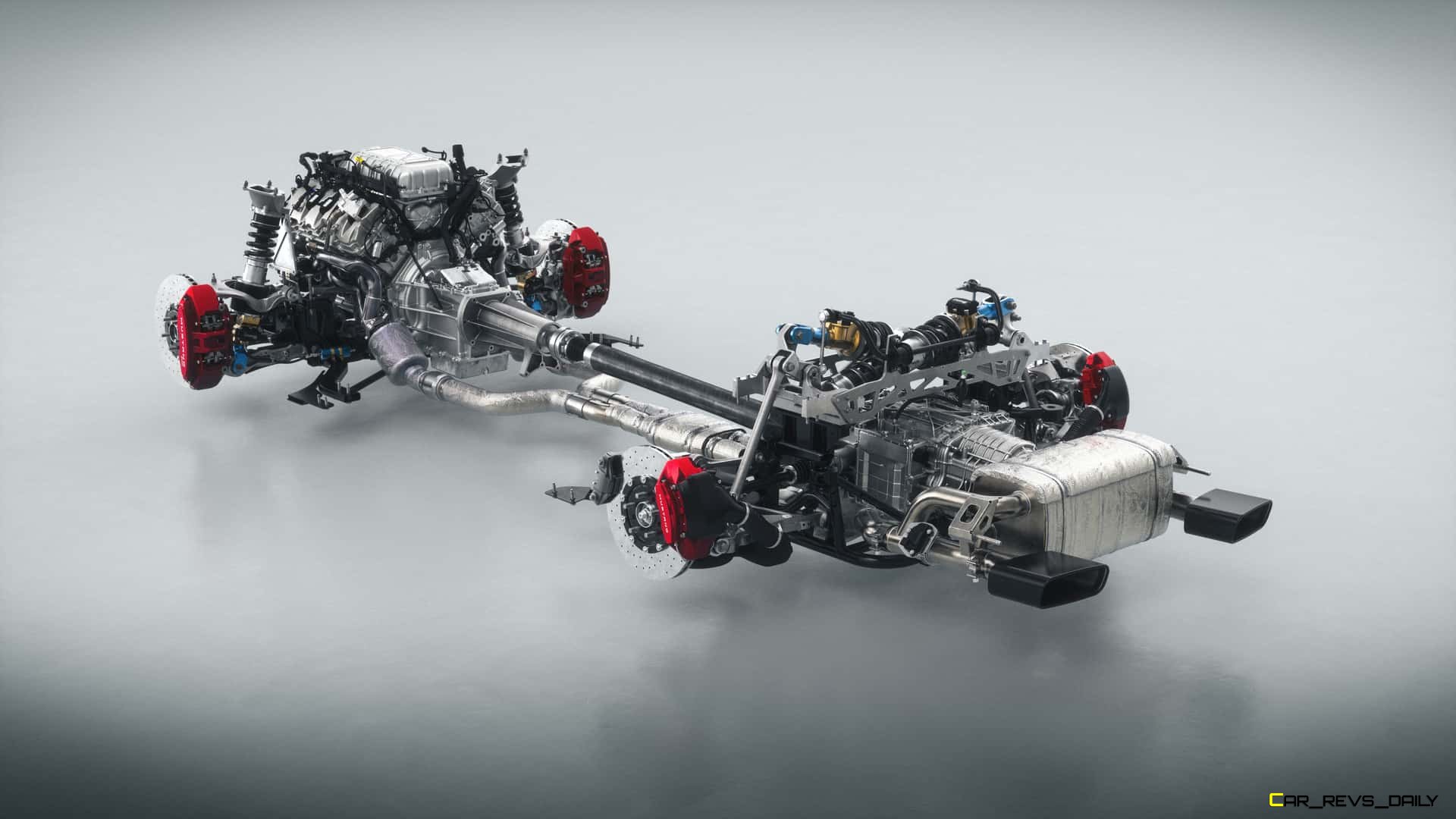
For now, Ford is not revealing the exact timeline for Mustang GTD production but confirmed that the engine and the bodies will come from the Dearborn Engine and Flat Rock Assembly plants, respectively, before they are shipped off to Multimatic in Canada, where the firm will handle the final installation and assembly. Production will be limited (Ford didn’t reveal an end cap figure), and prices will start at $300,000 before the addition of any options as well as associated fees.

Carl Malek has been an automotive journalist for over 10 years. First starting out as a freelance photographer before making the transition to writing during college, his work has appeared on numerous automotive forums as well as websites such as Autoshopper.com.
Carl is also a big fan of British vehicles with the bulk of his devotion going to the Morgan Motor Company as well as offerings from Lotus, MG, and Caterham. When he is not writing about automobiles, Carl enjoys spending time with his family and friends in the Metro Detroit area, as well as spending time with his adorable pets.




